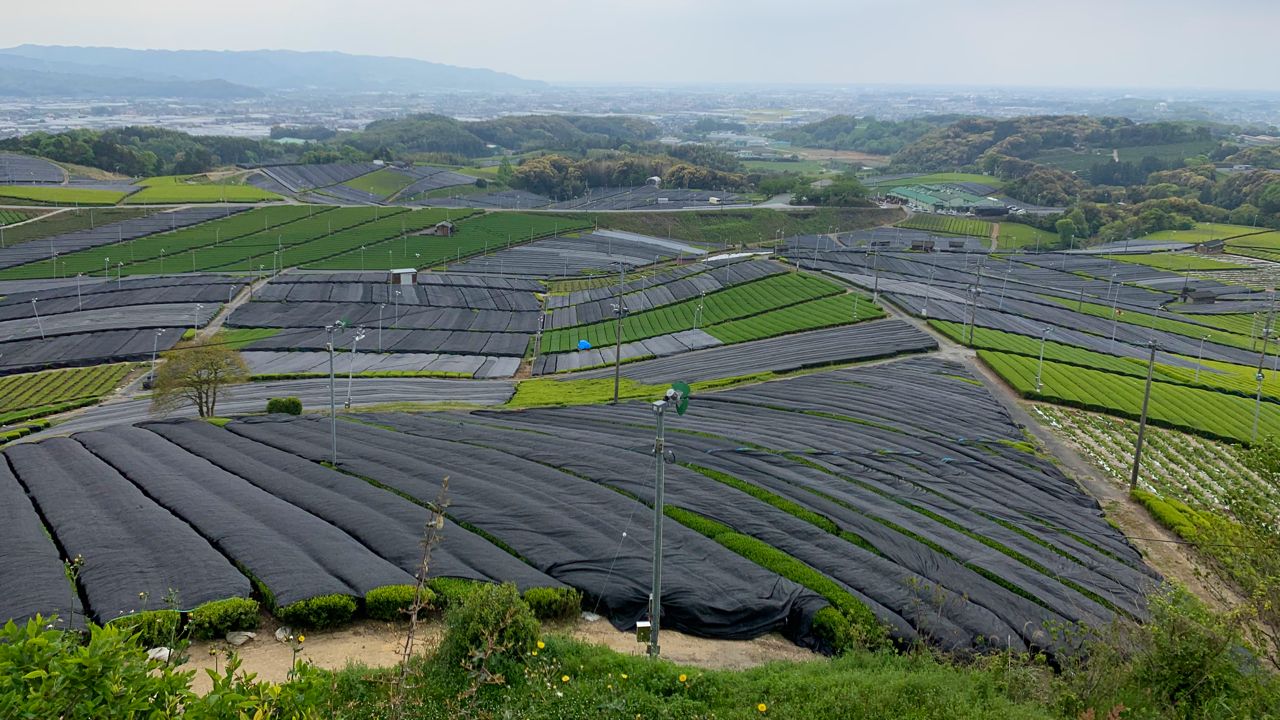March 2021 – Kabusecha from Fukuoka
This month, we selected a Kabusecha (かぶせ茶), from the region of Yame (八女) in the prefecture of Fukuoka (福岡).

Kabusecha from Yame
Kabusecha is classified between Gyokuro (玉露) and Sencha (煎茶), and is somewhat more affordable than Gyokuro. It is prepared by covering the tea leaves to protect them from direct sunlight during the last 5 to 7 days before harvest. For Gyokuro, the tea leaves are covered for around 20 days before harvest. Protecting the tea leaves from the sun distill the essence of tea, called theanine, a kind of amino acid which gives umami and sweetness to tea. On the other hand, tea well exposed to sunlight becomes bitter and astringent. That comes from catechin, produced from theanine by the process of photosynthesis.

This Kabusecha is made in a place called "tea garden in the sky" in a small village called Yabemura (矢部村). It is located in the region of Yame (八女), famous for Gyokuro production, at an altitude of 700 meters between two high mountains. The ambient conditions are perfect to make a good green tea: large difference of temperature between day and night, morning fog, short insolation time and of course abundant nature.
In addition, this tea producer, Kurihara Seicha (栗原製茶), has been taking care of its tea trees using organic fertilizer for more than 70 years. The tea prepared by nature and this producer has a beautiful green color and a mild taste, without bitterness. It evokes the arrival of spring. This Kabusecha is sweet and delicate, and goes very well with sweet things -but not too sweet- like these strawberry-flavored cookies called "Fukiyose (吹き寄せ)", meaning "gathered by the wind". It is a tea for welcoming spring.

No plum, no peach & no cherry without…
Plum, peach and cherry trees bloom in turns in order to announce us the arrival of spring. To start with, plum trees bear flowers with an exquisite, yet humble scent, around mid February. Watching plum trees in bloom on the street, we feel that the spring is nearby. Plum trees also have a poetic name "Harutsugegusa (春告草)", literally "herb announcing spring".
After a while, it is the turn of peach trees, around the beginning of March. That is also the sign of Girl’s Day. Peach has long been considered the symbol of female, and the elixir of immortality since time immemorial. Finally, cherry blossom arrives at the end of March. With their arrival, we realize that spring is in full bloom.
There are many common points in these three plants in terms of appearance. They are all categorized in broad-leaf trees, belong to the rose family, and they have small pretty pink or white flowers. How can we distinguish them without knowing the time of bloom? You can check the form of flower petals. Flower petals with round edge are from plum trees. Slightly pointed edges for peach trees, and saw-toothed edges for cherry blossom trees.

Plum, Peach and Cherry
A picture is worth a thousand words. But I advise you to watch them from a distance and especially not to pick them up and bring them home. Here’s my terrifying story. I had the idea to buy some branches of peach tree in a flower shop to decorate my room, because I was feeling down with COVID-19.
Some days passed without any problem. But one day, all of a sudden, caterpillars invaded my room! They woke up because of the air conditioner and started to have a party without my permission! That was a true tragedy for me, because I am so scared of them. Without any good reason, I admit…
Watch out. No rose without a thorn. I also add: no plum tree, no peach tree and no cherry blossom tree without…
Brewing Kabusecha
The amount of tealeaves should be adapted according to the desired taste: it should be around 10 to 12 grams of Kabusecha for 200ml (7oz) of spring water. The infusion should last 90 seconds in water at 70ºC (160ºF). The second infusion should be done more quickly than the first one. For the third one, even more quickly and hotter.
Enjoy your tea!
